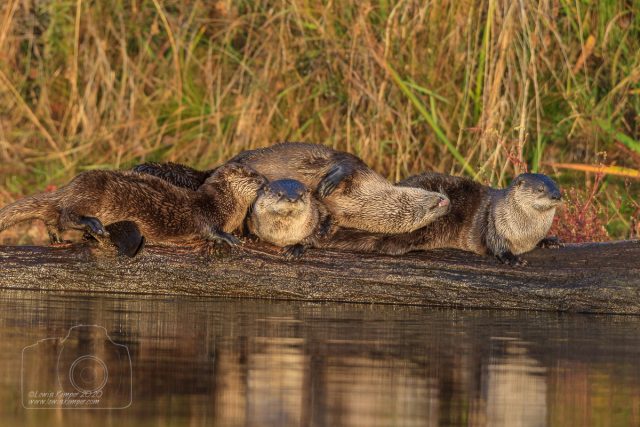Discover the Flyway from Home – Resources for Teachers, Parents & Students
The Playful River Otter
The North American river otter, an aquatic mammal, is one of the most charismatic animals that can be seen in the Yolo Bypass Wildlife.

A member of the weasel family, river otters are low and long, with thick, dense fur, short ears, long whiskers, and a sleek tail. Generally more active at night (nocturnal), they can also be seen during the day (diurnal), swimming and diving in canals, sliding into ponds, or scurrying across a road between two sources of water. Otters can be territorial and will scent mark, scratch, or even fight to protect their domain. Use the link below from National Geographic to learn more about the North American river otter. Then, see if you can answer these questions:
- List three (or more) adaptations that otters have to help them swim underwater.
- Where do river otters make their homes?
- Name two (or more) things that river otters eat.
- What is a threat to survival for the river otter? Name at least one.
Bonus: What’s another name for a river otter’s tail? Why?
https://www.nationalgeographic.com/animals/mammals/n/north-american-river-otter/
For more information and resources on river otters and other animals, go to National Geographic Kids:
https://kids.nationalgeographic.com/animals/mammals/river-otter/
Photo courtesy of Lewis Kemper
Answers:
- Powerful tails, webbed feet, water repellent fur, ears and nose close in water are all adaptations otters have for swimming underwater.
- River otters make a burrow near the edge of a water source like a river, lake, swamp, or estuary.
- Otters mostly eat fish and also eat amphibians, turtles, and crayfish
- Habitat loss is the primary threat to the survival of the North American river otter. They are also sensitive to environmental pollution.
Bonus: Another name for a river otter’s tail is a rudder! A rudder is a tool that is used on boats to help steer through water.